PVC Rocket Launcher
Steve was first introduced to this incredible teaching tool in 2001 while speaking at the U.S. Space Camp for Educators. As part of the week-long […]
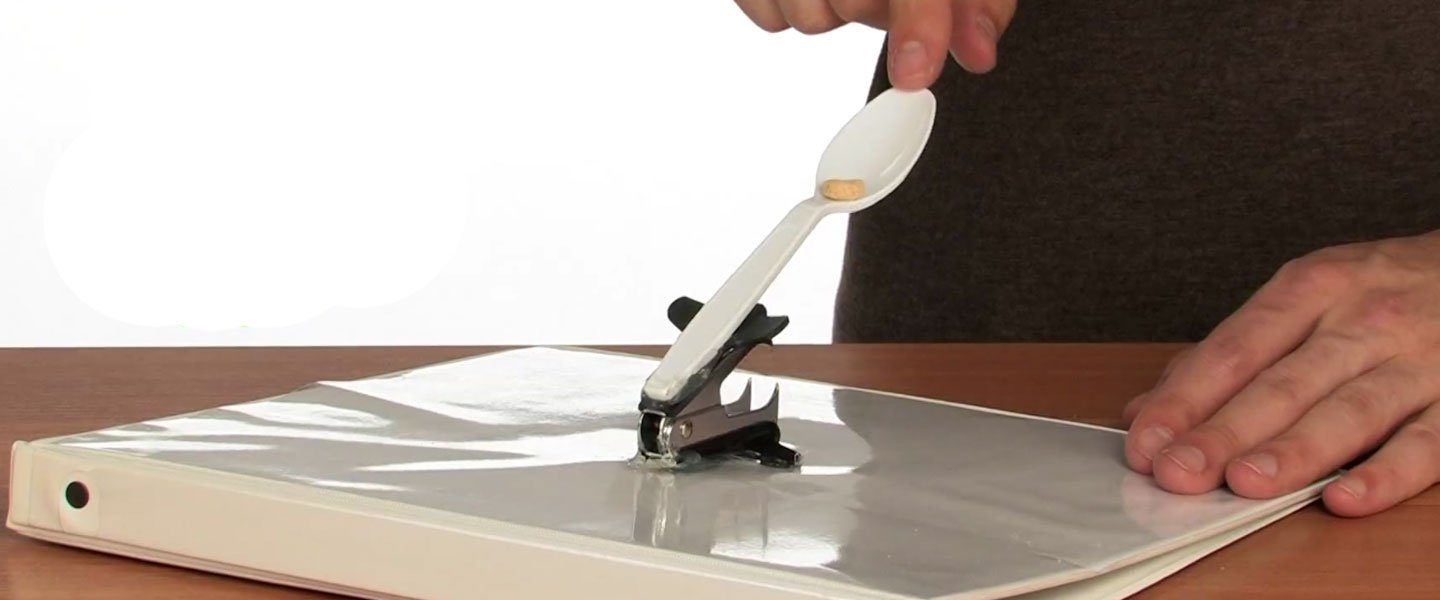
Since city ordinances (among other things) won’t allow us to build a full-scale Medieval catapult, we had to scale it down a bit. Despite the setbacks, we’ve come up with a pretty sweet, indoor-safe Desktop Catapult. And the best part is that everything you’re going to need can be found right in your home. The Desktop Catapult makes for a fun way to explore the properties of physics and motion.
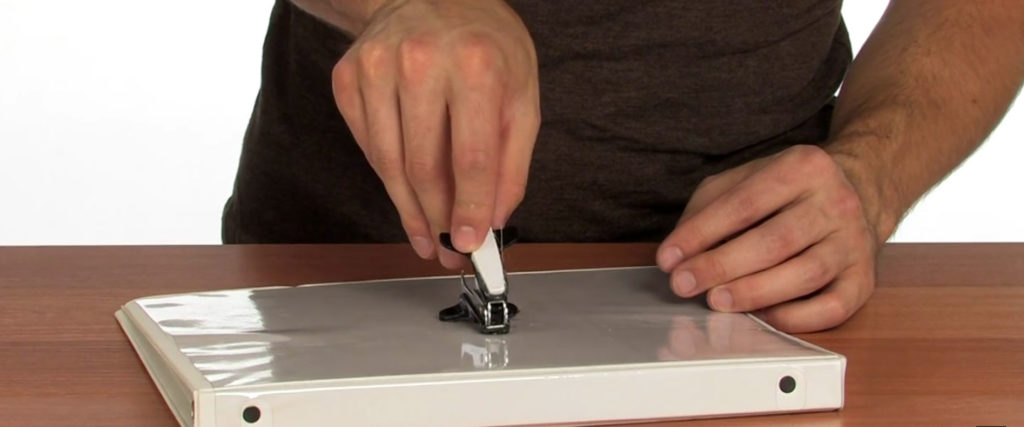
Apply an ample amount of hot glue to the bottom (wider claw) of the staple remover. Press and hold the staple remover against your base. (If you are using tape, make sure that you have the staple remover secured to the base.)
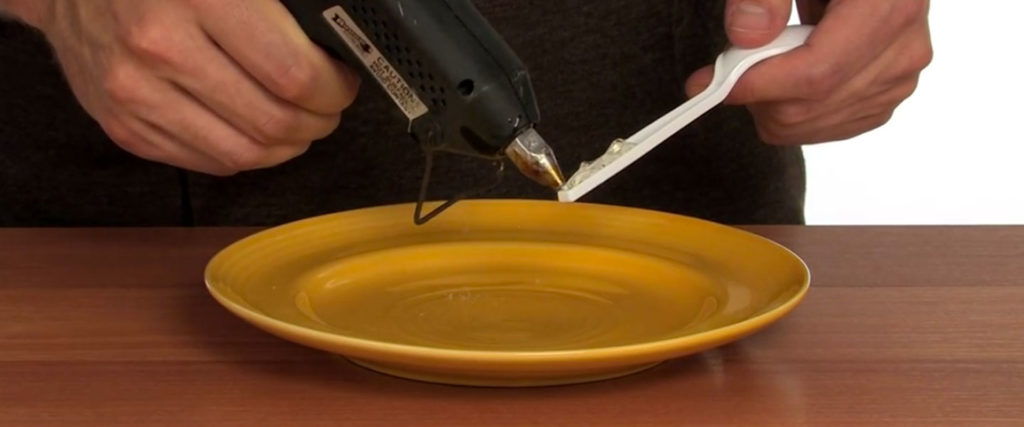
Apply a strip of glue to the top side of the staple remover and press the spoon onto the top of the remover. The end of the spoon handle should be lined up with the non-clawed end of the staple remover. Be sure that the spoon is secured to the top of the staple remover. (Again, if you are using tape, make sure the spoon won’t be able to break free.)
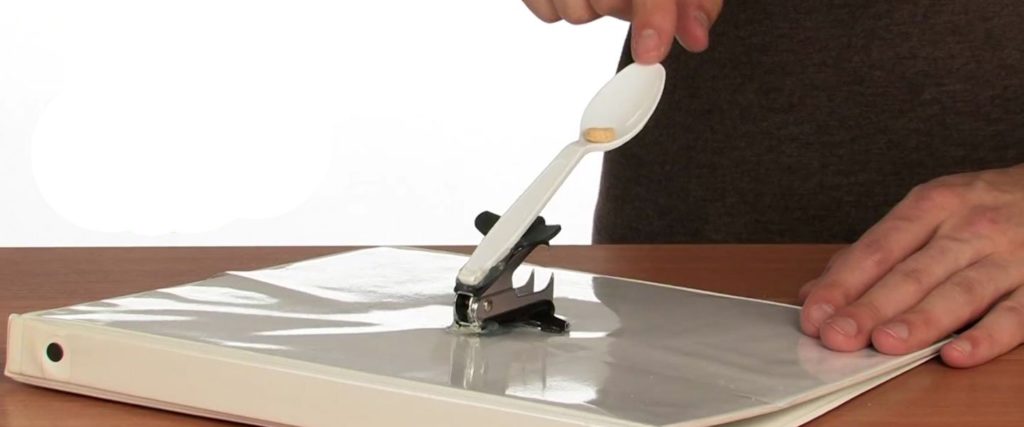
You’re ready to launch! Put an object, like a tin foil ball or a small piece of candy, in the bowl of the spoon.
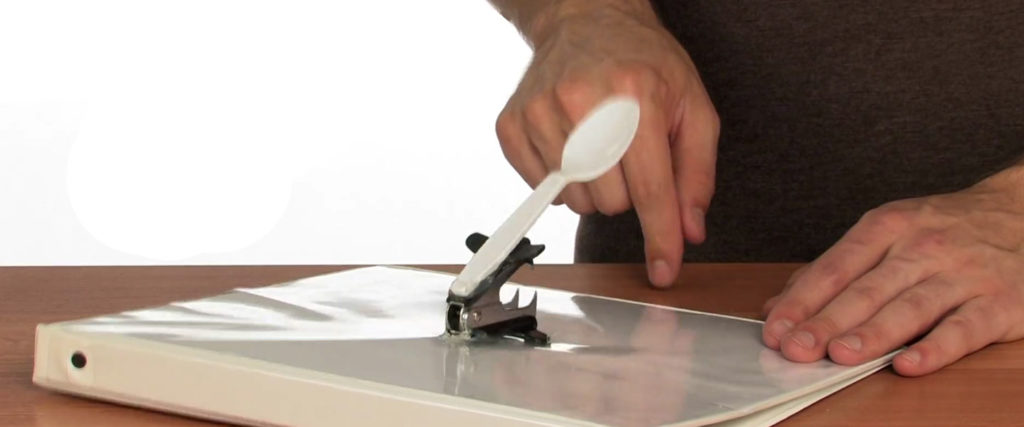
Gently pull downward on the bowl of the spoon. Make sure not to get in the way of your projectile.
Sure, making and using a catapult is a ton of fun, but do you understand how and why it works?
Let’s start off with a little history behind the catapult. During the Medieval Era, entire cities would be surrounded by seemingly impenetrable walls. These walls could be extremely tall and extremely thick – too tall to climb and too hard to break through. So some crafty scientists devised a way to launch projectiles OVER the wall. If they could attack from the outside, they didn’t need to get over or through the wall.
So how did they come up with this clever instrument? Well, the catapult is actually a couple of simple ideas combined into one complex machine. By combining a simple machine, the lever, with a spring and another lever, you’ve got a catapult.
The first lever in our Desktop Catapult is the staple remover. The fulcrum is at the end opposite of the claws. The spring makes the staple remover snap open when you release it. Finally, the second lever is the spoon, which has its fulcrum where it touches the staple remover. Pretty cool, right?
Now that you have created a Desktop Catapult from simple office supplies, take a look around your home, kitchen or even classroom. What other supplies could you use to build another catapult?
Preforming the Desktop catapult SICK Science demonstration is pretty cool, but it isn’t a science fair project, yet. You can create a science fair project by identifying a variable, or something that changes, and deciding on something to measure in this experiment. Let’s take a look at some of the variable options that might work:
That’s just a couple of ideas, but you aren’t limited to those! Try coming up with different ideas of variables and give them a try. Remember, you can only change one thing at a time. If you are measuring the distance the objects travel, make sure that the other factors are remaining the same!